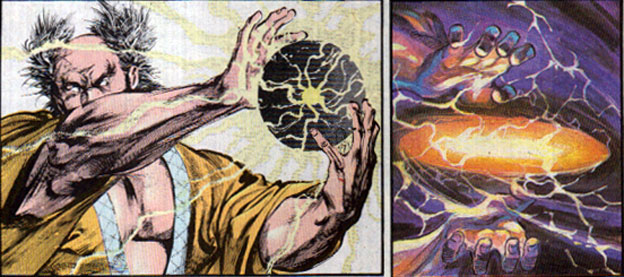
In the Star Wars films the Jedi that used the dark side of the force (the Sith) could shoot electricity from their fingertips. In manga and manhua some characters could generate similar powers in the form of chi and direct them at enemies. The fireball in SF was one of the most famous of the chi-based strikes. The origin of the fireball was based on qigong practice. The word Fa Jin best described the ranged special attacks in Street Fighter. The word roughly translated to “release of energy,” or in western circles "explosive power." Fa meant strength while jin meant energy. An example from popular culture would be Bruce Lee's one inch punch. This punch originated with the wing chung style of boxing and was featured as a technique in the Kill Bill movie. Lee was able to generate tremendous power for the strike at close range using a combination of rotational mechanics with his wrist and torso as well as a concentrated use of chi.
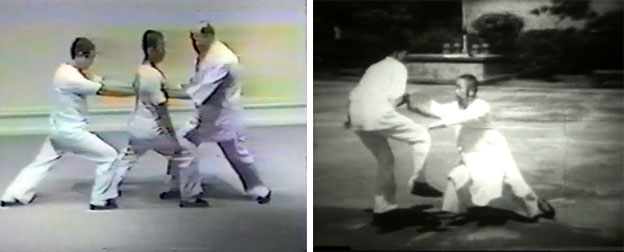
The way that fa jin worked was a focus of particular hard and soft qi techniques. Muscles had to be loose, chi had to be concentrated, tendons had to be contracted and the skeleton extended simultaneously. This released physical force and chi energy as one. Bruce Lee had a very loose and fluid style, he never tensed up before delivering punches or kicks and as such delivered strikes with tremendous power. In the film Enter the Dragon Bruce Lee explained part of his philosophy. "A good martial artist does not become tense, but ready. Not thinking, yet not dreaming. Ready for whatever may come. When the opponent expands, I contract. When he contracts, I expand. And when there is an opportunity, I do not hit. It hits all by itself."
The best martial artists were able to fight almost instinctively. They could observe a fight objectively as it was happening and look for nuances in spacing and angles of attack while trusting in their techniques and letting the strikes flow automatically. Practitioners of fa jin had tremendous mental and physical strength in order to perform these strikes. The average person could spend years developing one successful fa jin strike. In the Street Fighter series the characters could perform many types in rapid succession, demonstrating that they were far more than regular martial artists. The movement of the hadoken, and many other fireball attacks in manga and animé derived from the core of a person's chi and exploded from within, they were examples of ranged fa jin. Ryu's hadoken, Chun-Li's kikoken and Guile's sonic boom attacks were all types of this explosive energy.
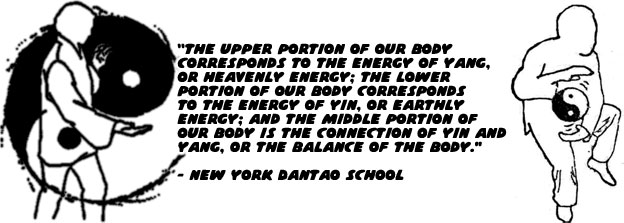
The physical core of a person, near the lower abdomen, was the center of gravity. In qigong it was also the spiritual core as well. The meridians constantly cycled energy through the body and circulated at the core. The upper half of the body was closest to heaven and was constantly striving to clear the mind from distractions and elevate the consciousness. The lower half was concerned with expelling energy and satisfying physical impulses or Earthly concerns. This constant exchange of energy circulated and found a balance in the core. In a martial arts the full release of a strike originated at the core of a person. The focus of breath came up through the diaphragm and was expelled in a short but powerful burst, the resulting expel of energy was accompanied by a yell. In karate this was a “kiai” literally a spirit yell or a spirit meeting. This focus on breathing, generating energy and striking at the same time was passed down from Chinese kung-fu and distilled into Japanese karate. The concept of a core of energy and vitality existed in several schools of martial arts, and not solely in Asia. Strength and power were drawn from the core and could be expelled as fa jin. Study the art and animations for Ken and Ryu's hadoken, the energy came from the core, was gathered in the palms and was drawn out before the characters struck.

This concept was exploited in the boss character Seth in Street Fighter IV. He had a literal yin and yang sphere where his abdomen should have been. This "Tanden Engine" was generating power for him and allowing him to absorb the attacks of his opponents as well as sending energy out.
Fa jin explained the philosophy behind the ranged attacks but visually they were inspired by manga and manhua stories. The attacks used in the martial arts had various naming conventions. The first blog of this series mentioned how early Shaolin Quan used metaphors for nature to describe techniques like "flood sweeping the land and floating like a feather." Other schools of martial arts also had developed similar naming conventions for the attacks. These names were popularized in films like Buddha's Fist and Crouching Tiger Hidden Dragon. In fact a character from the Four Constables manhua named Yuxia Tie aka Iron Hands used the crouching tiger hidden dragon technique as one of his moves. Another one of his moves, the Temper Fire Burning Fist was more reminiscent of a fireball attack featured in Street Fighter.
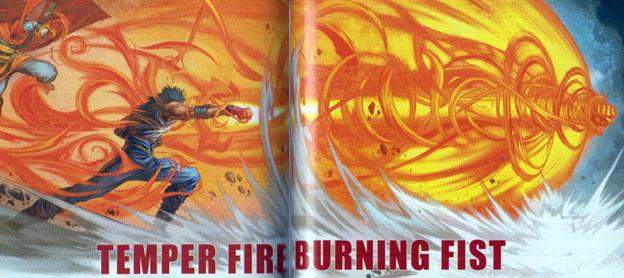
Street Fighter was filled with moves that were either metaphors or literal translations describing the attack. Hadoken was made up of three Japanese words (HA, DO, KEN) that translated to punch wave fist. In the original Street Fighter the attack was presented as a golden ball of energy. In Street Fighter II the same attack appeared as a light blue ball of energy with two palms traveling within it. The hands were in the same pose that Ken and Ryu had struck when sending out the energy blast. This was very similar to how ranged strikes appeared in manhua stories. A fa jin slash, chop or punch was actually drawn as a force of energy with the same position of the hands. The manhua titles that featured this artistic stylization predated those of Hokuto no Ken / Fist of the North Star.
The attacks of Kenshiro in Hokuto no Ken were not completely original either. The drawings featuring multiple hands in different poses were pulled from the Indic Mudra which were spiritual gestures featured in Hindu and Buddhist iconography. Each position of the hands and fingers in the mudra represented a state of consciousness. There were 108 poses in total. Whether the number had influenced the 108 heroes in the Water Margin or the 108 stars of destiny was not known.
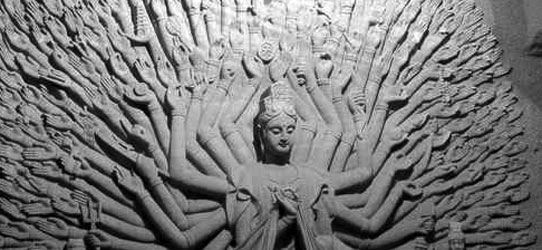
Each of the punches delivered from the 100 Crack Fist of the North Star was drawn in different pose as well. These hand positions were not accidental but had been seen in earlier manhua stories. Hokuto no Ken featured a great deal of spiritual iconography based in Buddhism.
It was originally difficult to see the palms hidden in the fireball animation on the original SF II. The redrawn SFII HD sprites made it much easier to see how the attack was supposed to look.

The choice of color for the special attacks in the SF series was also done with forethought. The light blue color associated with Ryu's hadoken signified strength and purity. The attacks of other characters also had their own individual colors. In the previous blog I had mentioned how special moves in HNK had distinct colors and shapes as well. The more aggressive characters and fighting styles had moves that looked jagged, or appeared frightening like a ghastly specter, or elemental like fire and lightning. The good characters had attacks with smoother lines and softer colors.

Street Fighter enjoyed the use of fireballs with unique shapes and coloring schemes. The "Sonic Boom" from Guile rotated like a helicopter, which was appropriate for a military fighter pilot. The "Kikoken" of Chun-Li not only reflected her mastery of fa jin, but it also highlighted the grace and beauty of the character. Kung-fu was considered to have more superfluous moves than were actually required for fighting by the modern fighting schools. Styles like karate and muay thai focused heavily on direct strikes and maximum force whereas kung-fu seems caught up in preserving techniques and traditions even if the forms were redundant. This contrast and comparison to kung-fu might explain why Chun-Li's ranged attack was presented as a swirling multicolored force. It glided across the screen like a jellyfish. While beautiful to look at, it did not have the speed or range of the hadoken from Ken or Ryu.
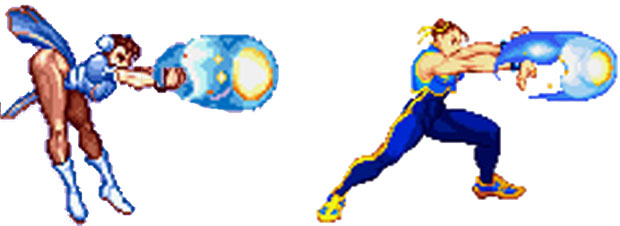
In manhua stories these ranged attacks were constantly growing and evolving. Both good and evil characters were developing variations of their own techniques or even of stolen techniques.
In the Iron Marshal comic two of the main characters were pursuing ultimate forms of the Thunderbolt Techniques. Tienway Champ, the mentor of the Iron Marshal, stole these techniques from a maser named the Great Thor. When Tienway's dark chi was combined with the technique he was capable of forming Thunderbolt Blasts of evil energy, represented as a dark fireball. By comparison the Great Thor never stopped evolving his technique and formed a more powerful variation called the Thunder Wrath. This new blast was bright by comparison and could overpower the dark version.
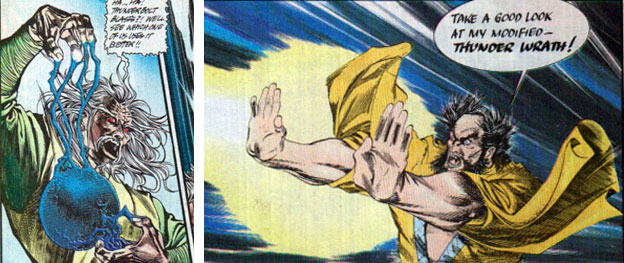
In the SF series the characters had developed their own variations of striking moves as well. Ryu had a focus on more powerful hadoken strikes, in Super SF II his fireball attack had changed shape from palms-shaped to a glowing sphere of energy. In SF III Ryu's had several variations, one of his most powerful ones, the Denjin Hadoken had lightning effects added to the attack. A focus on the shoryuken (rising dragon punch) was put on Ken. These attacks began to be animated with fire effects and did more damage than a regular shoryuken. By SF III Ken had several variations of the move as well, including the Shoryu Reppa (rising dragon destroyer) and Shinryuken (divine dragon fist) to distinguish himself from Ryu. The use of effects like lightning and fire harkened back to the elemental inspirations of kung-fu. Qigong observed the elements as having chi and effecting the meridians of the body. If these forces could be tapped then the striking power could be stupendous.
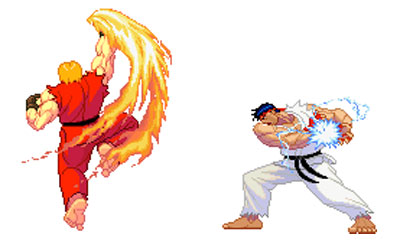
The creator of the original Street Fighter, Takashi Nishiyama actually credits an animé series for inspiring these moves. Takashi stated in a 1UP interview "…the Hadouken was inspired by a Japanese anime called Space Battleship Yamato. In that, the battleship has a laser missile called Hadouho -- it collects energy and then blasts it into space, destroying the enemy. That that's where I got the idea for the Hadouken. The Shoryuken and Tatsumaki Senpuukyaku were original ideas -- I took martial arts moves and exaggerated them so they looked like special attacks."
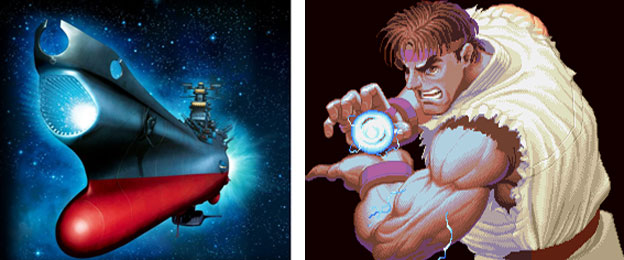
The Space Battleship Yamato series was originally aired in 1974 and several remakes have appeared since. The battleship would gather cosmic energy like a martial artist would gather chi and then expel it in a brilliant flash of energy. The wonderful moves used in Street Fighter were pulled from the martial arts as well as things well outside of the culture. These influx of ideas and influences would continue shaping the world that the developers were growing up in. As always if you enjoyed this blog and would like to sponsor me please visit my Patreon page and consider donating each month, even as little as $1 would help make better blogs and even podcasts!

So, do all Street Fighters practice a unique form or variation of their respective martial art that allows them to harness chi, or are they like jedi and are born like that?
ReplyDeleteI think at the core each fighter is that one in a million that can actually harness their chi and do the extraordinary. What separates the fighters are whether or not they have a technique to back up their ability.
Delete